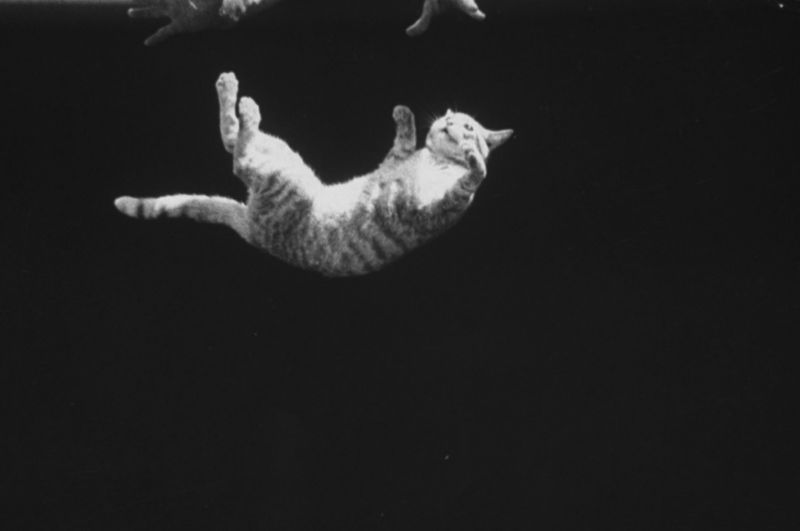The surprisingly complicated physics of why cats always land on their feet

Enlarge / A cat being dropped upside down to demonstrate a cat's movements while falling (credit: Ralph Crane/The LIFE Picture Collection via Getty Images)
Scientists are not immune to the alluringly aloof charms of the domestic cat. Sure, Erwin Schridinger could be accused of animal cruelty for his famous thought experiment, but Edwin Hubble had a cat named Copernicus, who sprawled across the papers on the astronomer's desk as he worked, purring contentedly. A Siamese cat named Chester was even listed as co-author (F.D.C. Willard) with physicist Jack H. Hetherington on a low-temperature physics paper in 1975, published in Physical Review Letters. So perhaps it's not surprising that there is a long, rich history, spanning some 300 years, of scientists pondering the mystery of how a falling cat somehow always manages to land on their feet, a phenomenon known as "cat-turning."
"The falling cat is often sort of a sideline area in research," physicist and cat lover Greg Gbur told Ars. "Cats have a reputation for being mischievous and well-represented in the history. The cats just sort of pop in where you least expect them. They manage to cause a lot of trouble in the history of science, as well as in my personal science. I often say that cats are cleverer than we think, but less clever than they think." A professor at the University of North Carolina, Chapel Hill, Gbur gives a lively, entertaining account of that history in his recent book, Falling Felines and Fundamental Physics.
Over the centuries, scientists offered four distinct hypotheses to explain the phenomenon. There is the original "tuck and turn" model, in which the cat pulls in one set of paws so it can rotate different sections of its body. Nineteenth century physicist James Clerk Maxwell offered a "falling figure skater" explanation, whereby the cat tweaks its angular momentum by pulling in or extending its paws as needed. Then there is the "bend and twist" (not to be confused with the "bend and snap" maneuver immortalized in the 2001 comedy Legally Blonde), in which the cat bends at the waist to counter-rotate the two segments of its body. Finally, there is the "propeller tail," in which the cat can reverse its body's rotation by rotating its tail in one direction like a propeller. A cat most likely employs some aspects of all these as it falls, according to Gbur.
Read 20 remaining paragraphs | Comments